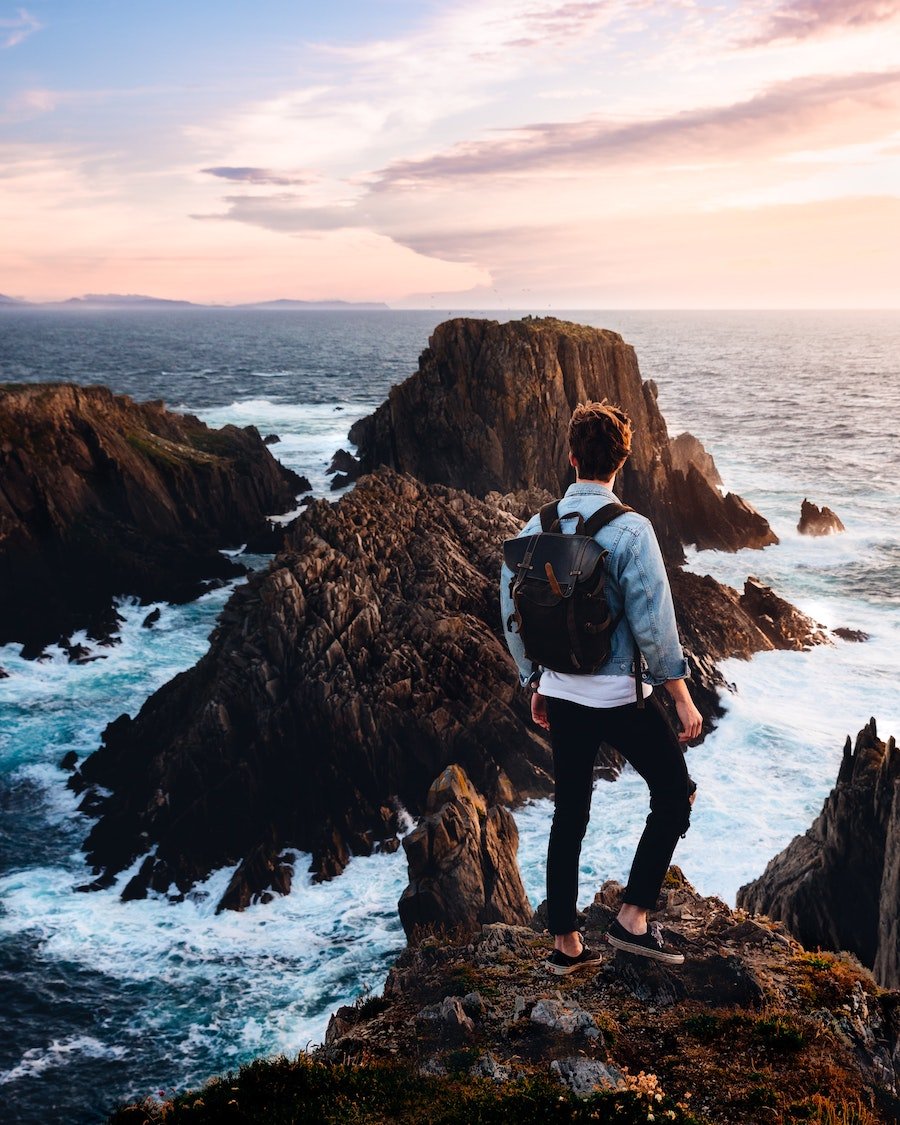In the wake of a pandemic, we’ve had no choice but to hit the pause button on travel. Other than giving us a wicked case of FOMO, it’s also given us a unique opportunity to take stock of the way we’ve travelled in the past. With cruise ships docked, a limited number of flights criss-crossing the international dateline and far fewer of us leaving our footprints around the planet, now is the perfect time to learn how we become more climate friendly travellers. And don’t worry, climate friendly doesn’t mean more expensive, so toss your thinnest wallet in your bag, grab your passport and let’s hit the road on some eco-friendly adventures.
The Climate-Friendly Travel Checklist

Flights Are Not As Bad As You Think
According to a few sources, flying only accounts for 2.5-3% of the world’s carbon emissions. That isn’t to say that flying doesn’t contribute to climate change, however, there are a number of industries that produce far higher emissions like agriculture, ground transportation, and industry. But if you are an avid flyer, one of the best things you can do to minimize your carbon footprint is to skip out on those ultra cheap, multi-stopover itineraries and opt for a non-stop or direct option.
Avoid Fast Food Restaurants
Fast food or chain restaurants produce a massive amount of waste. Single use plastics, poor waste standards and excess pollution plague fast food restaurants, and they’re not generally a good representative of local cuisine anyway so stick to local restaurants or food markets.
Eat a More Plant Based Diet
Did you know that it requires approximately 15,000 litres of water and 25 kilograms of grain to produce a mere one kilogram of beef. And if that statistic doesn’t make your head spin, try this one; An estimated 30% of land on earth is used for agricultural purposes. Yikes! We know raising generation after generation of meat-eaters just isn’t sustainable. There are so many incredible vegetarian and vegan cuisines around the world, so do planet earth a solid, and consider going veg for at least part of your holiday.
Bring Your Own Bag
The LAST thing the planet needs is another plastic bag, filled with useless, plastic souvenirs. Not to mention, plastic bags in most North American cities cost you extra. Do your carbon fiber wallet and the planet a favour and bring a couple of canvas bags for your shopping.
Put Together an Eco Friendly Travel Kit
Think about all of the single use plastic you use when you’re on vacation. Everything from the coffee cup you throw away before you step on your flight, plastic cutlery, cocktail straws, disposable toothbrushes, plastic, plastic and more plastic! Put together your own eco travel kit with reusable cutler, metal straws, metal chopsticks, and your own steel travel mug. These materials are easy to sterilize in your hotel or apartment rental.
Hire Local Guides
Using local guides is not only sustainable, but it’s also ethical. The best way to support the local economy of whatever destination you’re looking to explore, is to book with local guides and local tour companies. They’re also well versed in eco-friendly and sustainable practices that benefit their region specifically. They also tend to be more cost efficient than larger, international companies, so even the thinnest wallet can afford a five star eco-friendly experience.
Travel Slower
You’ve probably heard this term ‘slow travel’ before, but what does it mean? Slow travel generally means taking a trip and focusing heavily on one particular destination or region. This particular style of travel is popular with North American travellers because of their lack of holiday time. Slow travel generally means you’re not spending your days on non-stop sightseeing tours, bussing around, or catching trains. Your carbon imprint is smaller, and you often spend more time wandering your destination on foot or by bicycle.
Take a Cycling Tour
If you’re seriously dedicated to becoming a more climate friendly traveller, consider booking yourself on a cycling tour. With nations around the world building better infrastructure for cyclists, there are numerous destinations you can explore on two wheels. If you’re an avid cyclist at home, hop onto the tourism board website of just about anywhere in the world, and you’ll likely find several fantastic self-guided cycling itineraries to help you plan your trip.
Choose Green Accommodation Options
Do you know if the hotel you’ve just booked is sustainable? How rigorous is their recycling program? How much water do they waste or conserve? Do they adhere to any local green initiatives? These are all questions you should be asking before you book your hotel. Alternatively, look for eco-friendly lodges, inns or resorts that use sustainable materials. These types of accommodation often incorporate locally grown foods into their menus, use handcrafted toiletries from local companies and have greater control over the footprint of their guests.
Support Local Wildlife Initiatives
No more dolphin swims, elephant rides or wild animal encounters (unless they’re in a responsible sanctuary). All of these tourist-focused practices are not only cruel to the animals that needlessly suffer, but they’re also not climate friendly. These animals are often not fed what they need nutritionally, they attract large groups of tourists at once, and they have few standards when it comes to safety and sustainability.
Use Sunscreen That’s Reef Friendly
You know that yucky slick that your body leaves when you dive into a pool, or go snorkeling on a reef? Yeah, that’s deadly for underwater flora and fauna. There are reef destinations around the world that have all-out banned harmful sunscreens, so if you haven’t started doing your research, you better start now. There are a number of mineral based sunscreens that will offer you protection without damaging the ultra sensitive marine eco systems you want to explore.
Only Drink “Near-Beer”
Travelling is all about having that ultra local experience right? You’re already spending night after night dining on local delicacies, so why not wash it down with some of the local brews? Drinking ‘Near-Beer’ means supporting local breweries, distilleries or even vineyards, instead of drinking international options.
Being a more climate friendly traveller means you get to enjoy those bucket list destinations in a more wholesome, more localized travel experience. Sustainable travel is the only way to preserve national parks, help preserve wildlife populations for future generations to enjoy, and reduce our overall carbon footprint. Sustainable travel has also opened up a newer sector of the tourism industry, which has led to an increase in jobs around the globe. Destinations are tapping into green initiatives to give visitors an overall cleaner, more locally authentic experience.





Сподели:
How to Work Through a Pandemic Burn Out
10 OF THE MOST MESMERIZING PLACES ON EARTH